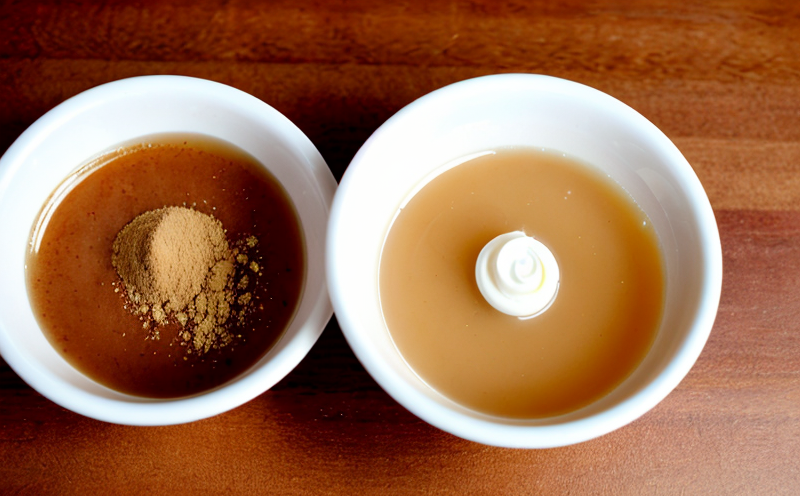ISO 5496 Sensory Flavor Threshold Testing
The ISO 5496 standard is a cornerstone in sensory flavor testing, designed to determine the lowest concentration at which a trained panel can detect a specified flavor or sweetener. This test is crucial for industries reliant on precision and quality control, especially those dealing with food additives, pharmaceuticals, and beverages. In this context, our laboratory ensures accuracy and consistency by adhering strictly to ISO 5496 guidelines.
The process involves a panel of trained individuals who evaluate the threshold at which they can detect the presence of a sweetener or flavor in a solution. This evaluation is conducted under controlled conditions to ensure that external variables do not influence the results. The test covers various types of sweeteners and flavors, including but not limited to sucralose, aspartame, and natural vanilla extract.
Our laboratory uses state-of-the-art equipment calibrated according to ISO standards to perform this testing accurately. The instrumentation includes flavor profiling systems that can detect minute concentrations of sweeteners in complex matrices. This precision is vital for industries where even the slightest deviation could impact product quality or consumer satisfaction.
The results from our ISO 5496 tests are highly reliable and repeatable, making them a preferred choice for compliance officers and R&D engineers who need to ensure their products meet international standards. The test's reproducibility is achieved by maintaining strict control over environmental factors such as temperature, humidity, and lighting during the evaluation.
The importance of this testing cannot be overstated, especially in sectors where consumer perception plays a critical role. For instance, in the food industry, understanding the sensory threshold helps manufacturers optimize their products to meet market demands while ensuring they remain safe for consumption. In pharmaceuticals, accurate flavor profiling is essential for patient compliance and product acceptance.
In conclusion, ISO 5496 Sensory Flavor Threshold Testing is a vital tool for maintaining high standards of quality in industries that rely on precise sensory evaluation. By adhering to this international standard, we ensure that our clients receive reliable and consistent results, which are essential for making informed decisions regarding product development and market positioning.
Scope and Methodology
The ISO 5496 standard outlines the procedures for determining the sensory flavor threshold of sweeteners in beverages or other liquid products. The scope covers both naturally occurring flavors and synthetic compounds, providing a comprehensive approach to flavor assessment.
- Sample Preparation: Samples are prepared according to specific protocols provided by ISO standards. This involves dilution of the sample to various concentrations, ensuring that each sample tested falls within the acceptable range for sensory evaluation.
- Sensory Panel Formation: A trained panel is selected based on their experience and expertise in sensory analysis. Each member undergoes rigorous training to ensure consistency in their evaluations.
- Evaluation Process: The panel evaluates the samples at different concentrations, recording their observations. This process continues until a consistent threshold is established for each sweetener or flavor tested.
The methodology ensures that all tests are conducted under controlled conditions, minimizing variability and enhancing accuracy. By following these steps meticulously, we ensure that our results are both reliable and reproducible.
Quality and Reliability Assurance
- Calibration of Equipment: All instruments used in ISO 5496 testing are regularly calibrated to maintain accuracy. This includes flavor profiling systems, pH meters, and other relevant equipment.
- Training and Certification: Our sensory panel members undergo continuous training and certification to ensure they meet the highest standards of sensory evaluation.
- Data Analysis: Data from each test is meticulously analyzed using statistical methods to ensure precision and reliability. This includes calculating the mean threshold for each sweetener or flavor tested.
The combination of these measures ensures that our results are not only accurate but also trustworthy, providing clients with confidence in their decision-making processes.
International Acceptance and Recognition
- Regulatory Compliance: Adherence to ISO 5496 standards is recognized worldwide, making our results universally accepted by regulatory bodies and industry stakeholders.
- Interlaboratory Comparability: Our laboratory's results are comparable across different locations due to strict adherence to international standards. This ensures consistency in quality assurance practices globally.
The widespread acceptance of ISO 5496 testing underscores its importance in maintaining high-quality standards across industries. By ensuring our results meet these stringent criteria, we contribute to the reliability and reputation of our clients' products on an international scale.





